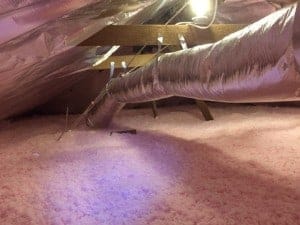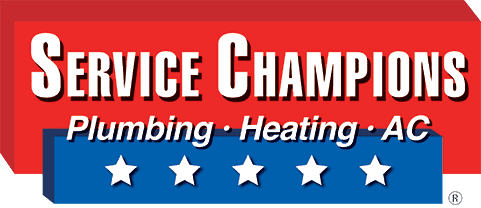Thinking of adding Insulation to your home?
Insulation is a part of a complete approach to heating and air conditioning service and more and more homeowners are opting for insulation in an eco-conscious effort.
Insulation is completed in the attic. From a heating and air conditioning perspective, the attic is an interesting space in the home. It is the area where the most amount of outdoor temperature enters. Because it is small and ventilation is limited, the air in the attic is packed with pathogens and particles. During the summer, it can reach triple digits easily.
With plenty of leaks, holes and crevices between the attic deck and the home ceiling, dirty attic air enters into the home, polluting the main air supply and changing the temperature, either heating what was cooled or cooling what was warm.
How Thick Should Attic Insulation Be?
When energy efficiency becomes a conversation piece, it is inevitable to talk about the pros and cons of insulation.
As of now, new homes must comply with insulation requirements. California Title 24 is an energy standard that mandates that all new homes be fitted with insulation with a minimum level of R-30, which measures out to be about 10 inches in depth.
If you home is did not come outfitted in insulation, give us a call for a free estimate or complete the form on this page.
How Insulation Works

At a basic level, insulation is a method to trap heat in a singular place so that it does not enter the home space. It serves as a barrier between the attic and the home ceiling. Heat is trapped between either metal plates or microfiber so the extremities of temperature are kept in the attic rather than leaking into the house.
Insulating your home allows:
- Greater control over the temperature and quality of your air
- More precise heating and air conditioning
- Less energy expenditure
- Prevention from heat-related damages and wear
Types of Insulation
Most HVAC contractors offer two types of insulation. Radiant-barrier insulation uses large metal sheets that attach to the underside of the roof. As heat enters through the roof, it is trapped between the metal sheets.
Blown-in insulation uses fiberglass of a pillow-like consistency. It carpets the floor of the attic. Heat is trapped in the fiberglass preventing it from seeping into the home.
Your air conditioning contractor can help you determine what type of insulation best suits your home construction. His or her expert advice is absolutely crucial in making insulation as effective as possible.
Expert Home Service by Service Champions
Service Champions Heating & Air Conditioning provides an extensive array of HVAC services, including alternative options to traditional air conditioning and methods to elevate indoor air quality.
As the only Diamond Certified HVAC provider for Los Angeles and Orange Counties, our technicians are dedicated to providing excellence in customer care and technical service, making your experience with us extraordinary.
To learn more about how Service Champions can be your choice HVAC contractor, contact one of our friendly representatives in our call center or book an appointment online.

